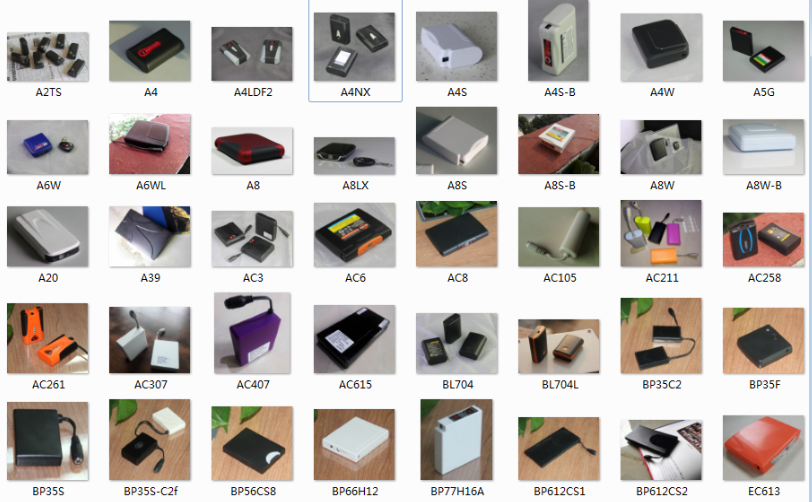At present, there are generally three methods for manufacturing white LEDs . The first is a two-primary white LED that uses a blue light emitted by an InGaN LED chip to excite a Ce:YAG phosphor, which is then mixed by the blue light of the LED and the fluorescence produced by the Ce:YAG phosphor to obtain white light. The technology is relatively mature and low in cost, so it is widely used. The second type is a synthetic white LED based on three primary color phosphor conversion, which uses ultraviolet LED light to excite red, green and blue phosphors to achieve white light output. Due to the low efficiency of the UV LED and the difficulty in matching the phosphor, it is less applicable. The third type is a multi-chip white LED, which mixes the light of three colors of red, green and blue LEDs to obtain a white light output. This technology has higher control requirements on the chip and increases the technical cost, so it is currently less used.
Studies have shown that using blue light cut-off filters to filter out blue light can reduce the damage of blue light to the human eye. The current commercially available blue-ray protective glasses and shields are blue-light filters based on coating technology to filter out most of the blue light. The technique is to reflect the blue portion of the light source, so that the total brightness of the light source is attenuated to some extent, and the energy of the basket light is wasted.
In fact, another method can be used, which can attenuate most of the blue light in the light source, and convert the blue light into green light and yellow light that are not harmful to the human eye, so that the total brightness of the light source is less attenuated. This technique uses a suitable fluorescent dye to specifically absorb the blue light in the LED lamp and emit green and yellow light by the fluorescent radiation of the dye molecule to supplement the loss of the brightness of the light source caused by the absorption of the blue light.
In this paper, the dye-doped polymer is used to absorb the blue light in the LED lamp to reduce the blue light hazard of the LED lamp, and the spectrum and chromaticity of the light source before and after absorption are compared and evaluated.
1. Sample synthesis and spectrum measuring device
The synthesis method of the dye-doped polymer used in this study is briefly described as follows: methyl methacrylate, methyl acrylate, ethyl acrylate, dibutyl phthalate, azobisisobutyronitrile, n-butyl sulphide The alcohol reagent is mixed in an appropriate ratio, pre-polymerized at a temperature of 80 ° C for about 15 minutes, cooled and mixed into the prepared dye solution, and then further polymerized at 55 ° C, 80 ° C and 100 ° C for a total of 17 hours to obtain a dye. Doped polymethyl methacrylate (PMMA) polymer. The polymer was mechanically cut into discs of suitable thickness and the ends were then ground and polished for experimental measurements. The wafer has a diameter of 10 mm, a thickness of 4 mm and 8 mm, respectively, and a doping concentration of the dye in the polymer of 0.01 mg/g.

Figure 1 is a schematic diagram of an experimental apparatus for measuring the spectrum of an LED lamp before and after absorption. The LED light source is a commercially available 3W projection lamp, and the projected parallel light is passed through the dye-doped PMMA sheet and then imaged by the L1 and L2 lenses at the entrance slit of the monochromator. . The model of the monochromator is Omni λ3005 (Zhuoli Hanguang), its focal length is 30cm, the wavelength scanning range is 300-900nm, and the photomultiplier tube is CR114 type. In order to eliminate the spectral overlap of the different diffraction orders, a filter is added at the exit slit, the choice of which is automatically controlled by the wavelength scanning software. When scanning the spectrum, the signal of the photomultiplier tube is recorded by A/D conversion and further processed. The wavelength scanning control and spectral data storage of the monochromator are performed by a computer.
we are professional battery manufacturer in heated clothing industry over 10 years. we make all kinds of li ion battery packs for heated jacket, wlectric jacket, heated sweatshirt, heated motorcycle gear, heated boots, heated shirt, heated slippers, electric heated jacket, heated pants, battery heated jacket, heated glove liners, heated ski gloves, heated coat womens, heated vest womens, heated underwear, electric clothing, heated motorcycle jacket, heated gloves and socks, heated hunting jacket, electrician pants, heated hat, battery operated gloves.
we offer the most extensive models for heating clothing industry, our heating clothing batteries range from 3.7v to 14.8v most popular models, capacity from 1800mah to 10000mah, with LED light and switches to display remaining power level and set output levels. OEM/ODM accepted and we are specilisted in design these batteries, providing industry design, pcb design, tooling design, moulding service, prototyping, and flexiable small quantity manufacturing.

Heated Clothing Battery,Heated Jacket Battery,Heated Gloves Battery,Heated Vest Battery
Asarke Industry Co., Limited , https://www.asarke-industry.com